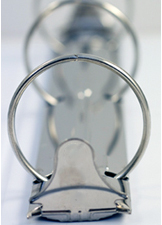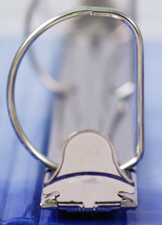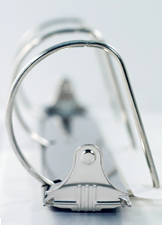The Difference Between Round Ring, Straight D and Angle Metals
For the metals or rings in your loose-leaf binder there are several options. The most common metals have 3 rings and range in capacity from 1/2″ to 3″.
What is Ring Capacity?
The ring capacity is the measurement of the inside of the metal mechanism. Do not measure the outside spine of the binder case. The ring capacity is crucial. If it is too small the book block will not fit on the rings and turning the pages will be difficult.
The diagram below shows where to measure on a round ring, d-ring and angle d-ring to determine the capacity.
What are the different ring types?
Round rings are circular and the most common ring used. They are all-purpose, most economical and work well for many applications. Round rings can be attached the spine or back cover, with the spine being the most popular placement.

D-rings (or straight D-rings) are shaped like a backwards “D”. This ring allows the sheets to lie flat along the straight edge of the metal for less wear on the hole punched paper. D-ring are always attached the back cover.

Angle D-rings are similar to the D-ring metals, expect the straight edge is angled. The ring is wider at the bottom than at the top of the ring. This ring is especially good for larger capacity binder. Angle D-rings are always attached to the back cover.


